The Niche
What is a niche?
Organisms occupy different places in part because each
species has a range of conditions under which it can grow and reproduce.
These conditions help define where and how an organism lives.
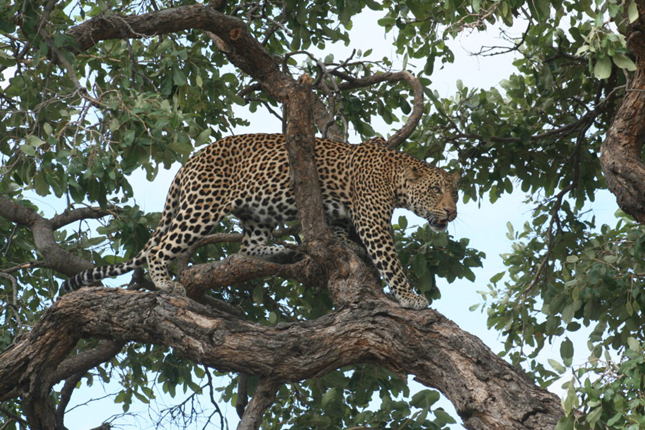
Tolerance
Every species has its own range of tolerance.
Tolerance
The ability to survive and reproduce under a range
of environmental circumstances
When an environmental condition, such as temperature,
extends in either direction beyond an organism’s optimum range, the organism
experiences stress. Why? Because it must expend more energy to maintain
homeostasis, and so has less energy left for growth and reproduction.
Organisms have an upper and lower limit of tolerance for every environmental
factor. Beyond those limits, the organism cannot survive. A
species’ tolerance for environmental conditions, then, helps determine
its “address” or habitat.
Habitat
The general place where an organism lives or can be
found
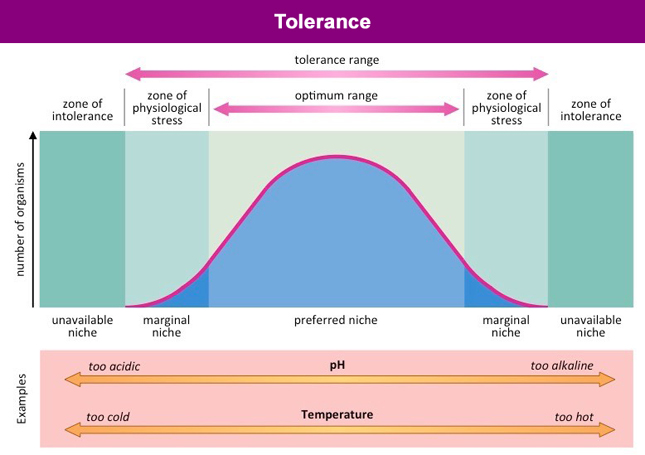
Defining the Niche
Describing a species’ habitat tells only part of its story.
Ecologists also study a species’ ecological “occupation”—where and how
it “makes a living.” This idea of occupation is encompassed in the idea
of an organism’s niche.
Niche
A full range of physical and biological conditions
in which an organism lives and the way in which the organism uses those
conditions
A niche describes not only what an organism does, but
also how it interacts with biotic and abiotic factors in the environment.
A niche is the range of physical and biological conditions in which a species
lives and the way the species obtains what it needs to survive and reproduce.
Understanding niches is important to understanding how organisms interact
to form a community.
Resources and the Niche
The term resource can refer to any necessity
of life, such as water, nutrients, light, food, or space. For plants,
resources can include sunlight, water, and soil nutrients—all of which
are essential to survival. For animals, resources can include nesting
space, shelter, types of food, and places to feed.
Physical Aspects of the Niche
Part of an organism’s niche involves the abiotic factors
it requires for survival. Most amphibians, for example, lose and
absorb water through their skin, so they must live in moist places.
If an area is too hot and dry, or too cold for too long, most amphibians
cannot survive.
Biological Aspects of the Niche
Biological aspects of an organism’s niche involve the
biotic factors it requires for survival. When and how it reproduces,
the food it eats, and the way in which it obtains that food are all examples
of biological aspects of an organism’s niche. Birds on Christmas
Island, a small island in the Indian Ocean, for example, all live in the
same habitat but they prey on fish of different sizes and feed in different
places. Thus, each species occupies a distinct niche.
What is a niche?
REVIEW & DO
NOW
Answer the following questions: |
| What is meant by a species' tolerance?
What is meant by a species' habitat?
What is meant by a species' niche?
Review: What is a community? |
|
| What kinds of resources do plants and animals
need in their niche?
What are the physical aspects of a niche?
What are the biological aspects of a niche? |
|
Competition
How does competition shape communities?
| If you look at any community, you will probably find
more than one kind of organism attempting to use various essential resources.
When organisms attempt to use the same limited ecological resource in the
same place at the same time, competition occurs. In a forest, for
example, plant roots compete for water and nutrients in the soil.
Animals compete for resources such as food, mates, and places to live and
raise their young. Competition can occur both among members |
|
| of the same species (known as intraspecific
competition) and between members of different species (known as interspecific
competition). |
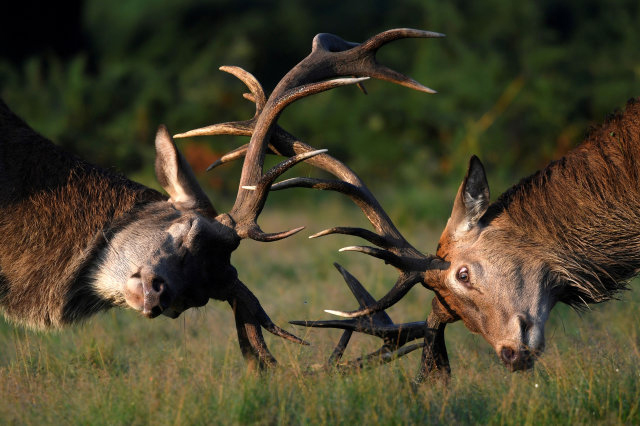
The Competitive Exclusion Principle
Direct competition between different species almost always
produces a winner and a loser—and the losing species dies out. One
series of experiments demonstrated this using two species of single-celled
organisms. When the species were grown in separate cultures under
the same conditions, each survived, as shown in Figure 4–6. But when
both species were grown together in the same culture, one species outcompeted
the other. The less competitive species did not survive.
Experiments like this one, along with observations in
nature, led to the discovery of an important ecological rule—the competitive
exclusion principle.
The Competitive Exclusion Principle
No two species can occupy exactly the same niche in
exactly the same habitat at exactly the same time.
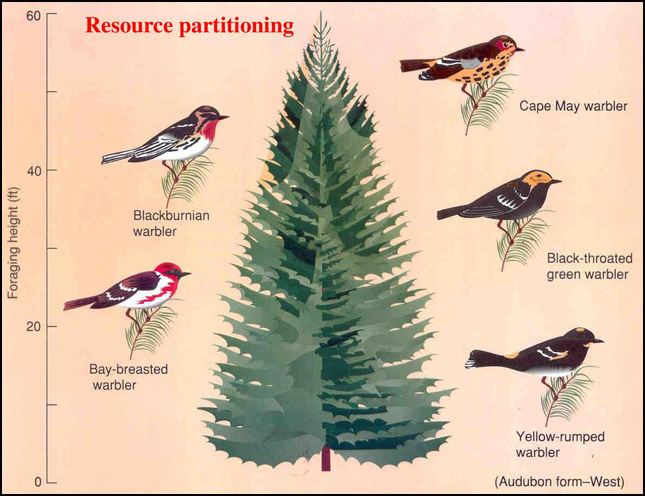
If two species attempt to occupy the same niche, one species
will be better at competing for limited resources and will eventually exclude
the other species. As a result, if we look at natural communities,
we rarely find species whose niches overlap significantly.
Dividing Resources
Instead of competing for similar resources, species usually
divide them. For instance, the three species of North American warblers
shown in the imagesall live in the same trees and feed on insects.
But one species feeds on high branches, another feeds on low branches,
and another feeds in the middle. The resources utilized by these
species are similar yet different. Therefore, each species has its
own niche. This division of resources was likely brought about by
past competition among the birds.
-
By causing species to divide resources, competition helps
determine the number and kinds of species in a community and the niche
each species occupies.
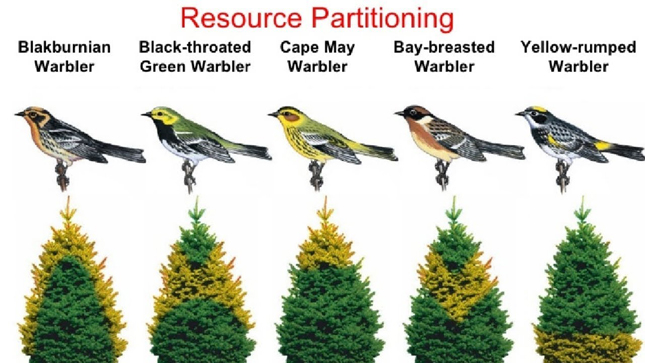
How does competition shape communities?
REVIEW & DO
NOW
Answer the following questions: |
What is the competitive exclusion principle?
Why does it work?
What is a result of the principle? |
|
| How does the competive exclusion principle determine
the number and types of species that can occupy a community? |
|
Predation, Herbivory, and Keystone
Species
How do predation and herbivory shape communities?
Virtually all animals, because they are not primary producers,
must eat other organisms to obtain energy and nutrients. Yet if a
group of animals devours all available food in the area, they will no longer
have anything to eat! That’s why predator-prey and herbivore-plant interactions
are very important in shaping communities.
Predator-Prey Relationships
Predation
An interaction in which one animal (the predator)
captures and feeds on another animal (the prey)
-
Predators can affect the size of prey populations in a
community and determine the places prey can live and feed.
Birds of prey, for example, can play an important role in
regulating the population sizes of mice, voles, and other small mammals.
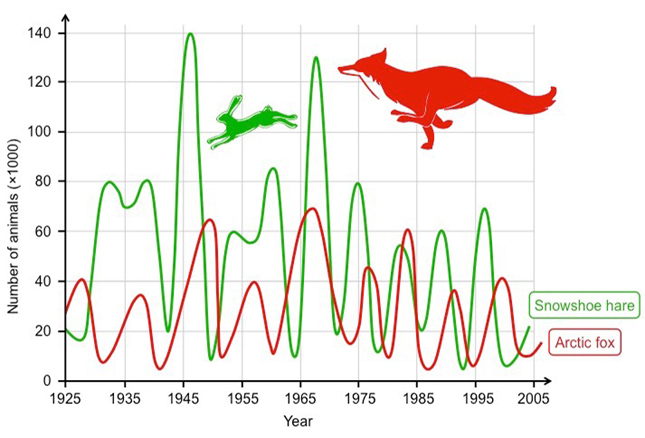
.
Predator-Prey Dynamics
The relationships between predator and prey are often
tightly intertwined, particularly in an environment in which each prey
has a single predator and vice versa. The graph here shows an idealized
computer model of changes in predator and prey populations over time.
1. Predict
Suppose a bacterial infection killed off most of the prey in 1950 on the
graph. How would this affect the predator and prey growth curves at point
between 1950 and 1960?
2. Predict
Suppose a sudden extended cold spell destroys almost the entire predator
population in 2005 on the graph. How would the next cycle of the prey population
appear on the graph?
3. Relate Cause and Effect
Suppose a viral infection killed all the prey in 1970. What effect would
this have on the predator and prey growth curves in the late 1970s? What
will happen in future years to the predator population? How could ecologists
ensure the continued survival of the predators in this ecosystem? |
. |
Herbivore-Plant Relationships
Interactions between herbivores and plants, like the gorilla
eating a succulent plant, are as important as interactions between predators
and prey.
Herbivory
An interaction in which one animal (the herbivore)
feeds on producers (such as plants)
-
Herbivores can affect both the size and distribution of
plant populations in a community and determine the places that certain
plants can survive and grow.
|
|
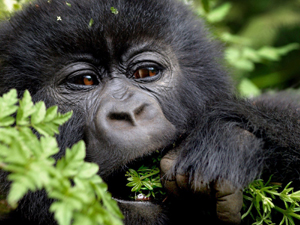 |
Herbivores ranging from caterpillars to gorillas can have
major effects on plant survival. For example, very dense populations
of white-tailed deer are eliminating their favorite food plants from many
places across the United States.
Keystone Species
| Sometimes changes in the population of a single species,
often called a keystone species, can cause dramatic changes in the
structure of a community.
Keystone Species
A single species that is usually not abundant in a
community yet exerts a strong control on the structure of that community |
|
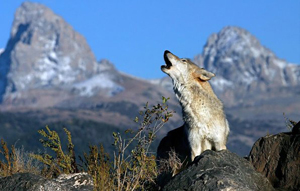 |
In the cold waters off the Pacific coast of North America,
for example, sea otters devour large quantities of sea urchins. Urchins,
in turn, are herbivores. Their favorite food is kelp, giant algae
that grow in undersea “forests.”
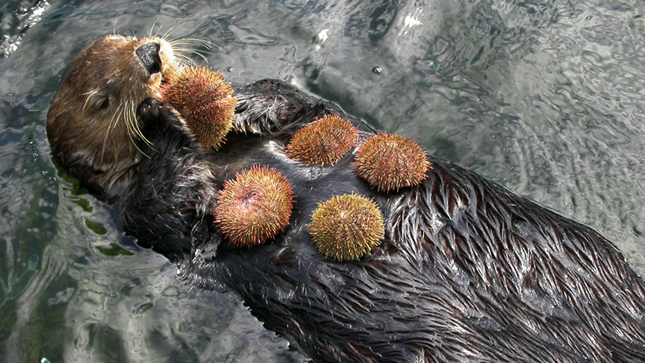
A century ago, sea otters were nearly eliminated by hunting.
Unexpectedly, the kelp forest nearly vanished. What happened? Without
otters as predators, the sea urchin population skyrocketed. Armies
of urchins devoured kelp down to bare rock. Without kelp to provide
habitat, many other animals, including seabirds, disappeared. Clearly,
otters were a keystone species in this community. After otters were
protected as an endangered species, their population began to recover.
As otters returned, the urchin populations dropped, and kelp forests began
to thrive again. Recently, however, the otter population has been
falling again, and no one knows why.
How do predation and herbivory
shape communities?
REVIEW & DO
NOW
Answer the following questions: |
What is predation?
Give an example.
How does predation affect a community?
What is herbivory?
Give an example. |
|
| How does herbivory affect a community?
What is a keystone species?
Give an example of a keystone species an how it affects
its community. |
|
Symbioses
What are the three primary ways that organisms depend
on each other?
Any relationship in which two species live closely together
is called symbiosis, which means “living together.” Biologists recognize
three main classes of symbiotic relationships in nature: mutualism, parasitism,
and commensalism.
Symbiosis
A relationship in which the individuals of two species
live close together
Mutualism
The sea anemone’s sting has two functions: to capture
prey and to protect the anemone from predators. Even so, certain
fish manage to snack on anemone tentacles. The clownfish, however,
is immune to anemone stings. When threatened by a predator, clownfish
seek shelter by snuggling deep into tentacles that would be deadly to most
other fish, as seen in the striking image below. But if an anemone-eating
species tries to attack their living home, the spunky clownfish dart out
and fiercely chase away fish many times their size. This kind of
relationship between species in which both benefit is known as mutualism.
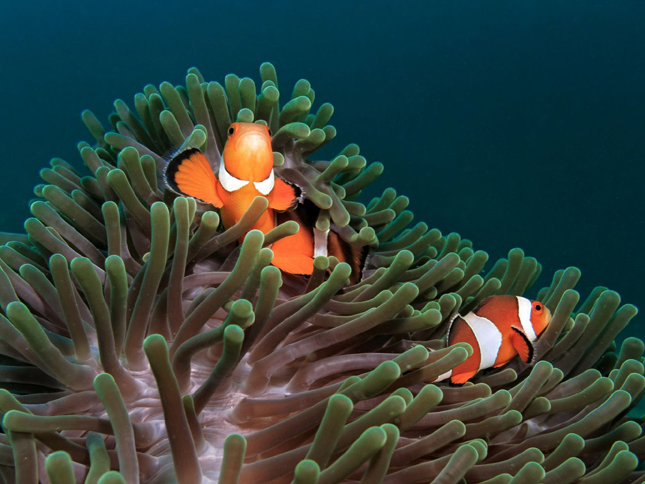
Mutualism
Symbiotic relationship in which both species benefit
from the relationship
| Parasitism
Tapeworms live in the intestines of mammals, where they
absorb large amounts of their hosts’ food. Fleas, ticks, lice, and
leeches live on the bodies of mammals, feeding on their blood and skin,
as seen below, or wasps who lay their eggs inside of caterpillars.
These are examples of parasitism. |
|
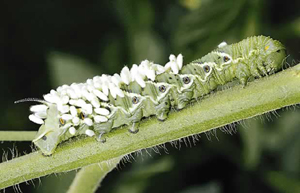 |
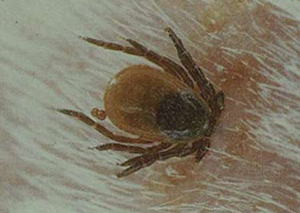 |
Parasitism
A symbiotic relationships in which one organism lives
inside or on another organism and harms it
The parasite obtains all or part of its nutritional needs
from the host organism. Generally, parasites weaken but do not kill
their host, which is usually larger than the parasite. |
|
Commensalism
Small marine animals called barnacles often attach themselves
to a whale’s skin, as seen below. The barnacles perform no known
service to the whale, nor do they harm it. Yet the barnacles benefit
from the constant movement of water—that is full of food particles—past
the swimming whale. This is an example of commensalism.
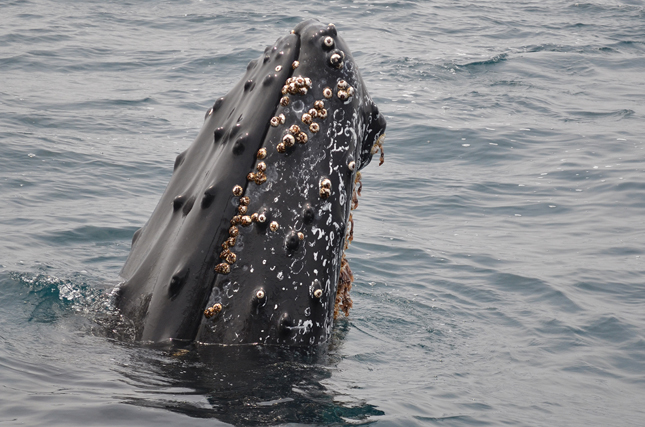
Commensalism
A symbiotic relationship in which one organism benefits
and the other is neither helped nor harmed
What are the three primary ways
that organisms depend on each other?
REVIEW & DO
NOW
Answer the following questions: |
|
|
| Name and define the three types of symbiosis, and give
an example of each. |
|
|


